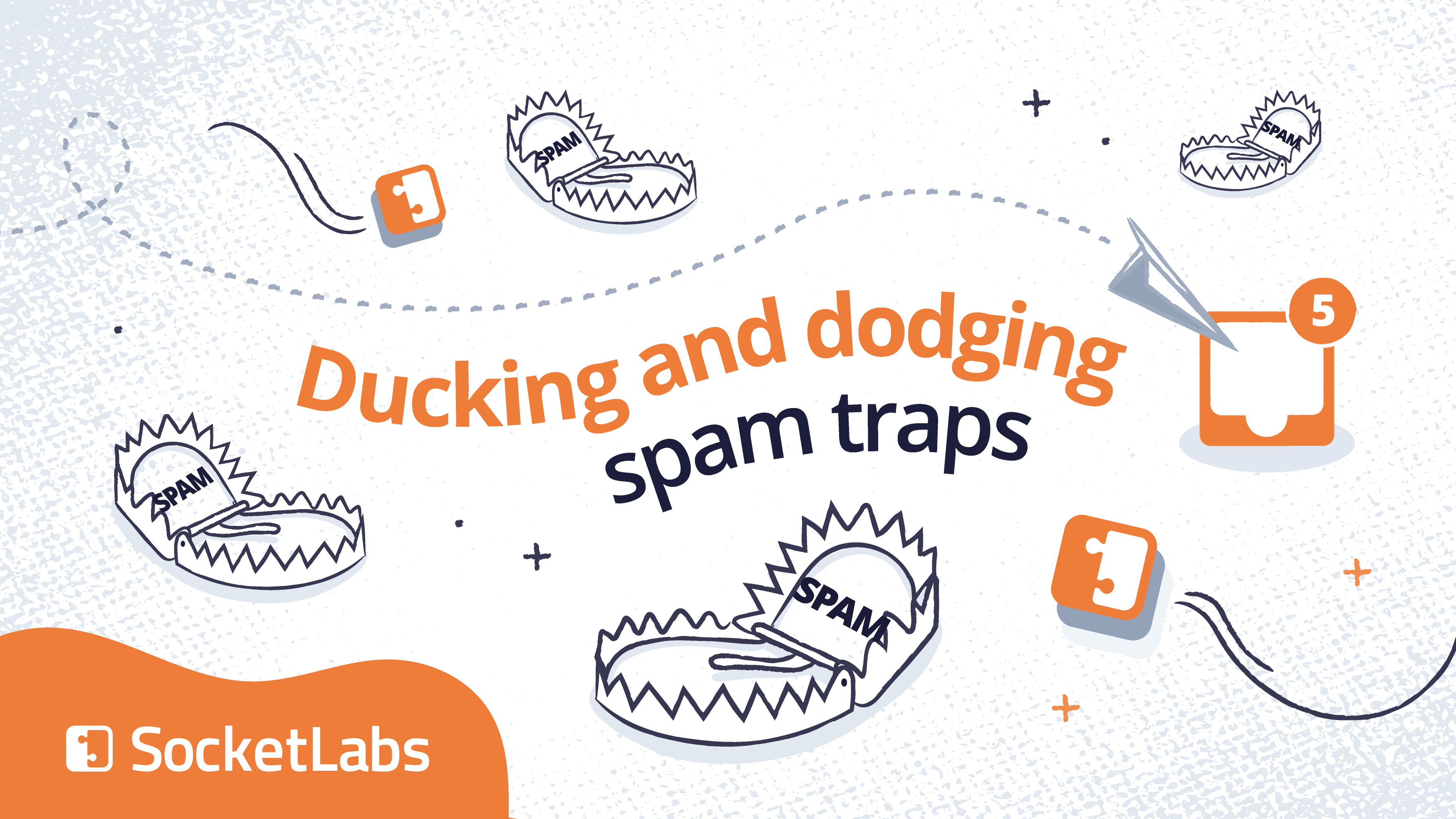
Email and spam traps have an “It’s Complicated” relationship status on Facebook. Or at least they would if Facebook still had that option.
If you’re here, you likely know enough about spam traps to be dangerous. If not, here is a little quick info to keep you up to speed on what they are and how you can know you’re hitting them.
Can they harm you? Yes. Can you avoid spam traps and their related harm? Also yes.
Duck or…

You need to follow email best practices. The benefits are endless, from avoiding more spam traps to hitting the inbox more consistently to converting more engaged customers.
Your main goal when it comes to following best practices is spotless list hygiene.
Always use permission-based list growth
Remember: quality over quantity. Doing this extra-thoroughly will include a double opt-in process in which you accept the email address, but you send a confirmation email first to confirm their interest before adding them to the normal distribution list. It’s a great way to prove a legitimate email address.
Avoid purchasing lists
Just don’t do it. You might want to argue with me about it but don’t bother, the advice won’t change. Because legality does not equal inbox placement! Sure, you won’t get sued for sending that email, but if a recipient hasn’t signed up to hear from your brand, then sending to them unexpectedly could damage your deliverability — and your brand.
Protect any address-collecting forms with a service like CAPTCHA
There are lots of variations out there, including hCAPTCHA and Google’s invisible reCAPTCHA. Any of these options will help prevent bots from abusing your forms and flooding your list with garbage data (including spam traps).
Use a validation service at the point of collection
Rather than looking at addresses after the fact, validation in real-time allows for immediate detection of typos at the point of sign up, requiring the individual to fix the misspelled address on signup forms before hitting submit.
Use a validation service after collection
This is less effective than real-time validation because you could still have sent a confirmation email to an invalid domain. Not to mention, it will increase the costs of your email operations, but if you’re hitting spam traps and can’t figure out any other way to solve it, running newly submitted addresses through a validator can help you determine whether to keep them on your contact list.
Send email to every address on your list periodically
At a minimum, aim to send to every contact on your list at least every six months. This is important for maintaining a relationship with your email audience, and will also help you to avoid recycled traps by ensuring you don’t accidentally miss the 6- to 24-month window in which the live address becomes invalid and results in hard bounces (before potentially becoming a trap).
Plan re-engagement campaigns
Honestly, just because someone hasn’t opened the last handful of emails you sent doesn’t mean they’re not real or not interested. Sometimes you just haven’t piqued their interest. Create a campaign in which you explicitly work to get them to engage with your email. This could be as explicit as asking them to confirm their desire to continue receiving your mail, or you could simply ask them to confirm their content preferences. Any kind of open or click activity can be a good sign they’re not a spam trap. Plus, if they indicate preferences, you can better segment your mail to them and perhaps even increase your engagement overall!
Let go
Yes. It’s hard. However, sunsetting or retiring disengaged addresses from your list is a critical step of list management. If you want to avoid traps, you’ll need to remove inactive addresses from your lists. If there isn’t activity after re-engagement, or the address has no activity after six months, it’s time to say goodbye. Your sender reputation will thank you for it.
Easy peasy, lemon squeezy. Sure, it might seem like a lot of work and in some ways, yes, it is. But it’s worth it. Without doing the work, you can’t benefit from the juice, right?
That being said, if you need more guidance or help, let us know. We can do that.







